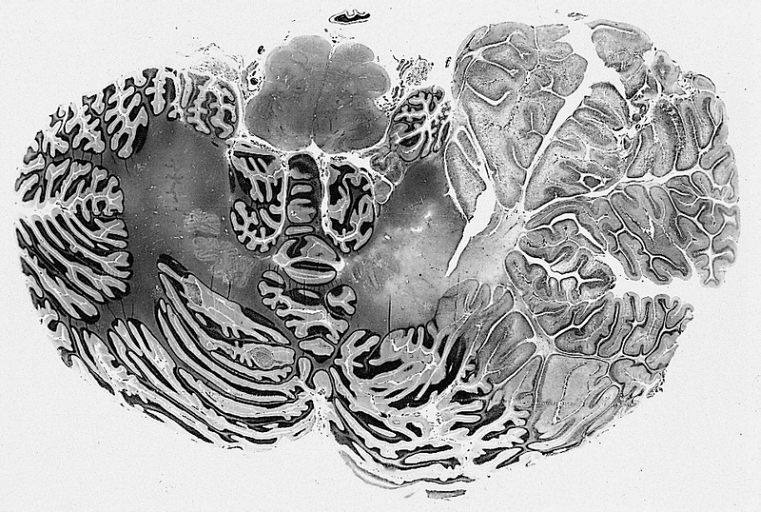Lhermitte-Duclos Disease

A very rare disorder characterized by abnormal development and enlargement of the cerebellum, and an increased intracranial pressure.
Clinical description
It manifests (most commonly in the third and fourth decades of life) with headache, nausea, cerebellar dysfunction, occlusive hydrocephalus, ataxia, visual disturbances and other cranial nerve palsies. Various associated abnormalities may be present (megalencephaly, microgyria, hydromyelia, polydactyly, partial gigantism, macroglossia). Co-existing conditions include Cowden disease.
Etiology
The etiology is uncertain; germline mutations in tumor suppressor gene PTEN have been identified in some patients with LDD.
Diagnostic methods
Diagnosis of LDD is confirmed by magnetic resonance imaging (MRI).
Management and treatment
Management includes decompressive surgical intervention.